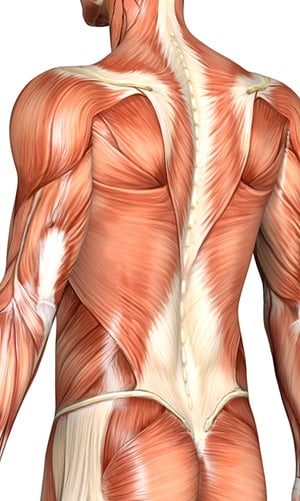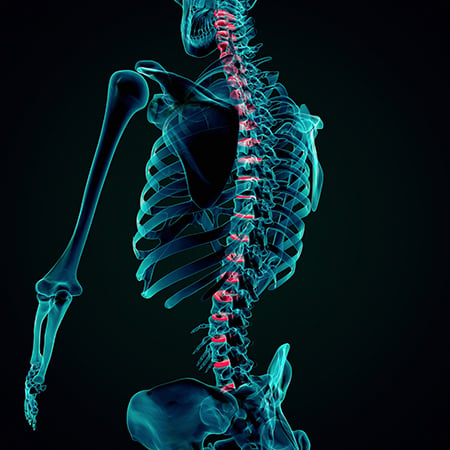Understanding how the muscles, ligaments, and discs support the spine will help you better understand your own situation.
Just as the spinal cord is supported and protected by the spinal column, the spinal column is protected and assisted by a complex system of supportive discs, ligaments, and muscles.
The intervertebral disc
At the core of this protection is the intervertebral disc. Each disc is a flat, round cushion that sits between individual vertebra and acts as a shock absorber between the vertebrae of your spine–and consists of an inner layer and an outer layer.
Made up of soft, jelly-like tissue of high-water content, these discs are critical in protecting the spinal column by keeping vertebrae separated during high-impact activity. The inner layer of the disc, or nucleus pulposus, serves as the main shock absorber. The outer layer of the disc, or annulus, is a strong fibrous ligament that not only protects the nucleus, it helps connect each vertebra together, thereby ensuring proper alignment of the entire spinal column.
Paraspinal muscles
With regards to motion of the human body, in general, it is joints that allow for flexibility and muscles that allow for mobility. The same can be said for the muscle groups surrounding the spine.
These paraspinal muscles (and there are many in the back) each control some part of the total movement between your vertebrae and the rest of the skeleton. These muscles can be injured directly in the form of strains or pulled muscles, or indirectly in the form of spasms due to injury to parts of the spine.
Typically, and in the case of spinal injuries, the surrounding muscles will automatically go into spasm to reduce motion around the area. This is one of your body’s defense mechanisms designed to protect and support the injured area.
Spinal ligaments
Ligaments are fibrous bands of connective tissue that attach to bone–in this case, vertebrae of the spinal column. The system of ligaments in the spinal column, combined with tendons and surrounding muscles, is what provides a natural brace to help protect the spine from injury. The ligaments also provide joint stability during both rest and movement, and help prevent injury from hyperextension or hyperflexion of the vertebrae.
While there are several types of ligaments attached to the spine, the primary ones are the anterior longitudinal ligaments (front of the spine), the posterior longitudinal ligaments (back of the spine), and the ligamentum flavum, which is the strongest of the three and helps protect the spinal cord and nerves, preserves upright posture, and assists the vertebral column in resuming its shape after movement.









